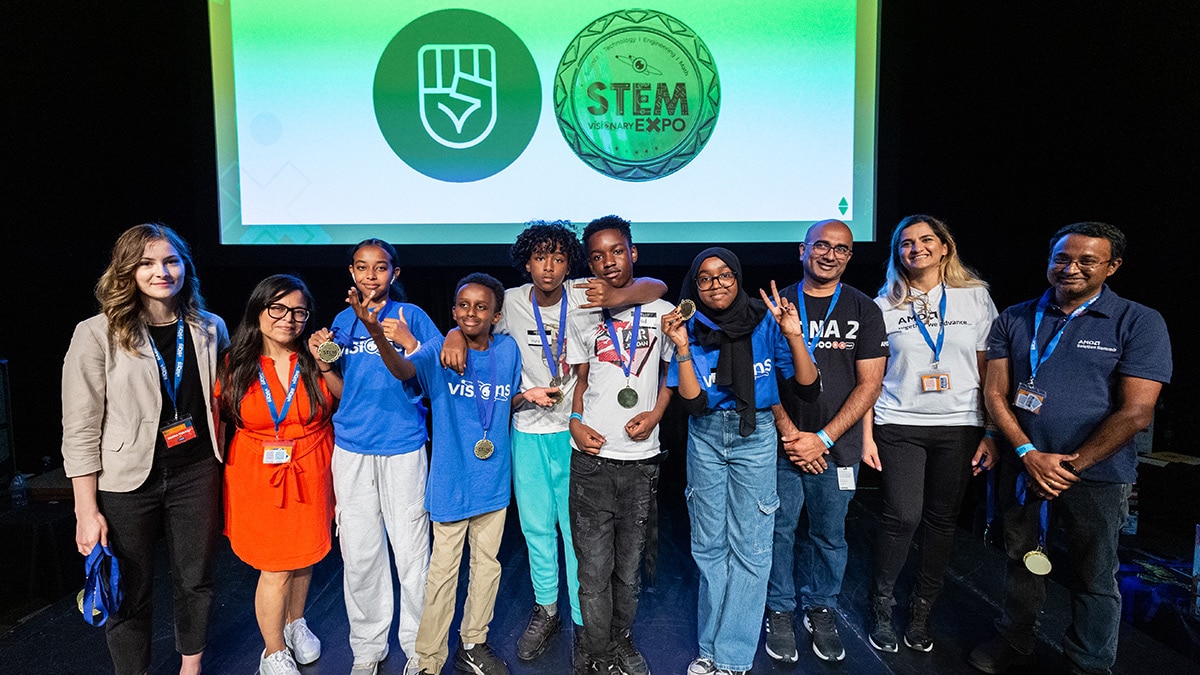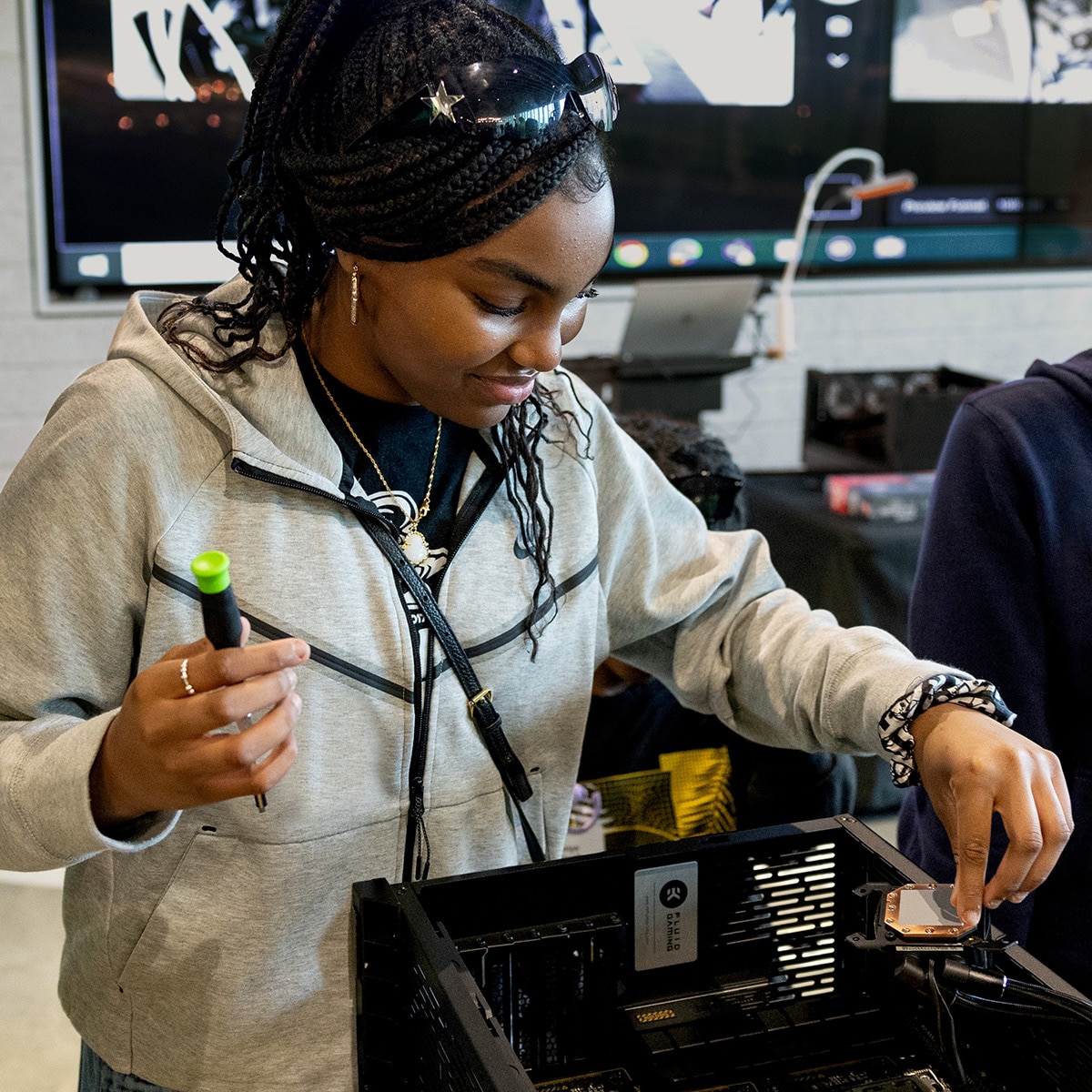
Canada
In the 2023-24 school year, AMD and Scientists in School worked to ignite STEM curiosity in over 1,400 young scientists through 60 enriching workshops across Canada.
Accelerating computing solutions, research, and education to solve the world’s most important challenges.

At AMD we believe that in the hands of the best and brightest, our technology can help address our shared challenges, so we can create a better future together. We take a collaborative approach to advance digital impact across areas such as scientific research, STEM education, and responsible product use.

We have set a public goal and are committed to making meaningful progress in our corporate responsibility efforts.
100 million people to benefit from AMD and AMD Foundation philanthropy and partnerships that enable STEM education, scientific research, and the workforce of the future from AMD donations initiated by 2025 (base year 2020)

Fueling the Engine of Scientific Research: AMD and HPE Power El Capitan Exascale-Level Supercomputer
Several years in the making, the National Nuclear Security Administration’s first exascale supercomputer – El Capitan – is nearing completion. An exascale supercomputer can calculate at least 1 exaflop – 1 quintillion (1018) calculations per second. Powered by AMD and HPE, El Capitan is projected to be the world’s most powerful supercomputer, able to calculate more than 2 exaflops.

In 2023, we collaborated with Maynooth University to establish an AMD Learning Lab in Dublin, Ireland to support the “STEM Passport for Inclusion” program for secondary school female students in socially disadvantaged communities.

We bring our commitment to advancing scientific research to life through the AMD University Program, which empowers academics with AMD technologies and educational resources to support classroom teaching. Our efforts include the AMD AI & HPC Fund and the collaborative AMD Heterogeneous Accelerated Compute Clusters (HACCs) program.

We are passionate about enabling the imagination and creativity of the next generation. Technology in their hands encourages exploration and learning that open doors to new careers and possibilities.

We work with schools, educators, and local non-profit organizations to outfit AMD Learning Labs with AMD processor-based equipment, helping inspire students to pursue STEM education and empower their teachers.
As of December 2023, AMD sponsored labs were installed in Dublin, Markham, Shanghai, Singapore, Penang, Austin, and San Jose.

Robotics is a popular topic in STEM education, as it provides an opportunity for students to prepare for the jobs of the future in a practical and engaging way.
AMD has sponsored several teams in the FIRST Robotics Competition over the years. Each team uses the RoboRIO controller, powered by an AMD Zynq™ adaptive SoC, to build their robots.


While we focus on harnessing the opportunities technology can bring, we also recognize its potential risks and the need to create guardrails that balance innovation with responsibility. AMD is committed to the responsible and ethical development of innovative technology, and to taking action to disrupt any malign use of our products that cause negative impacts.

With the immense opportunity of AI comes the challenge of keeping the technology focused on positive outcomes and helping solve some of humanity’s complex problems. AMD is committed to working with the industry to innovate and deploy AI in a responsible manner.


Leadership products and deep partnerships help advance the world. From aerospace and automotive, through energy and climate, to healthcare and beyond, partnerships advance almost every facet of the world we live in. Together, we turn the hardest problems into the greatest possibilities.


While we work to enhance and accelerate the possible benefits of our technology, we also remain mindful of the potential for negative impacts, such as increased energy consumption, threats to privacy, human rights abuses, and addictive behaviors. AMD actively engages in industry dialogues on these and other technological challenges through forums such as the Information Technology Industry Council (ITI), the Responsible Business Alliance (RBA), and the Semiconductor Climate Consortium (sponsored by SEMI).



